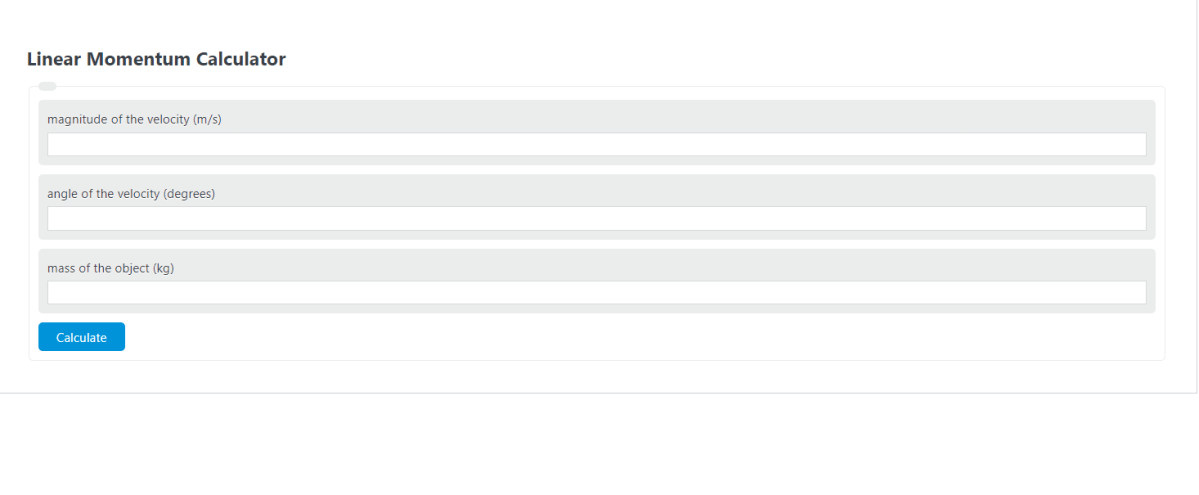Enter the magnitude of the velocity, the angle of the velocity, and the mass of the object into the calculator to determine the Linear Momentum.
- All Momentum Calculators
- Initial Momentum Calculator
- Conservation of Momentum Calculator (Final Velocity)
- Change In Momentum Calculator
- Magnitude of Momentum Calculator
Linear Momentum Formula
The following equation is used to calculate the Linear Momentum.
px = V*cos(a) * m
- Where px is the Linear Momentum (m/s*kg)
- V is the magnitude of the velocity (m/s)
- a is the angle of the velocity (degrees)
- m is the mass of the object (kg)
To calculate the linear momentum, multiply the magnitude of the velocity by the cosine of the angle, then multiply by the mass.
What are the units for Linear Momentum?
The most common units for Linear Momentum are m/s*kg.
How to Calculate Linear Momentum?
Example Problem:
The following example problem outlines the steps and information needed to calculate the Linear Momentum.
First, determine the magnitude of the velocity. In this example, the magnitude of the velocity is determined to be 50 (m/s).
Next, determine the angle of the velocity. For this problem, the angle of the velocity is measured to be 20 (degrees).
Next, determine the mass of the object. In this case, the mass of the object is found to be 15 (kg).
Finally, calculate the Linear Momentum using the formula above:
px = V*sin(a) * m
Inserting the values from above and solving the equation with the imputed values gives:
px = 50*cos(20deg) * 15 = 704.76 (m/s*kg)
FAQ
What is the difference between linear momentum and angular momentum?
Linear momentum is a measure of an object’s mass in motion along a straight line, calculated as the product of its mass and velocity. Angular momentum, on the other hand, relates to objects in rotational motion and is calculated as the product of the moment of inertia and angular velocity. The key difference lies in the type of motion: linear for linear momentum and rotational for angular momentum.
Can linear momentum be conserved in collisions?
Yes, in an isolated system where no external forces are acting, the total linear momentum before the collision is equal to the total linear momentum after the collision. This principle is known as the conservation of momentum and applies to both elastic and inelastic collisions, although the kinetic energy may not be conserved in inelastic collisions.
How does the angle of velocity affect the calculation of linear momentum?
The angle of velocity affects the calculation of linear momentum by determining the direction of the velocity vector in relation to the object’s motion. The linear momentum is calculated using the component of the velocity in the direction of motion. By multiplying the magnitude of the velocity by the cosine of the angle of velocity, you obtain the component of the velocity that contributes to the linear momentum along the direction of motion.
